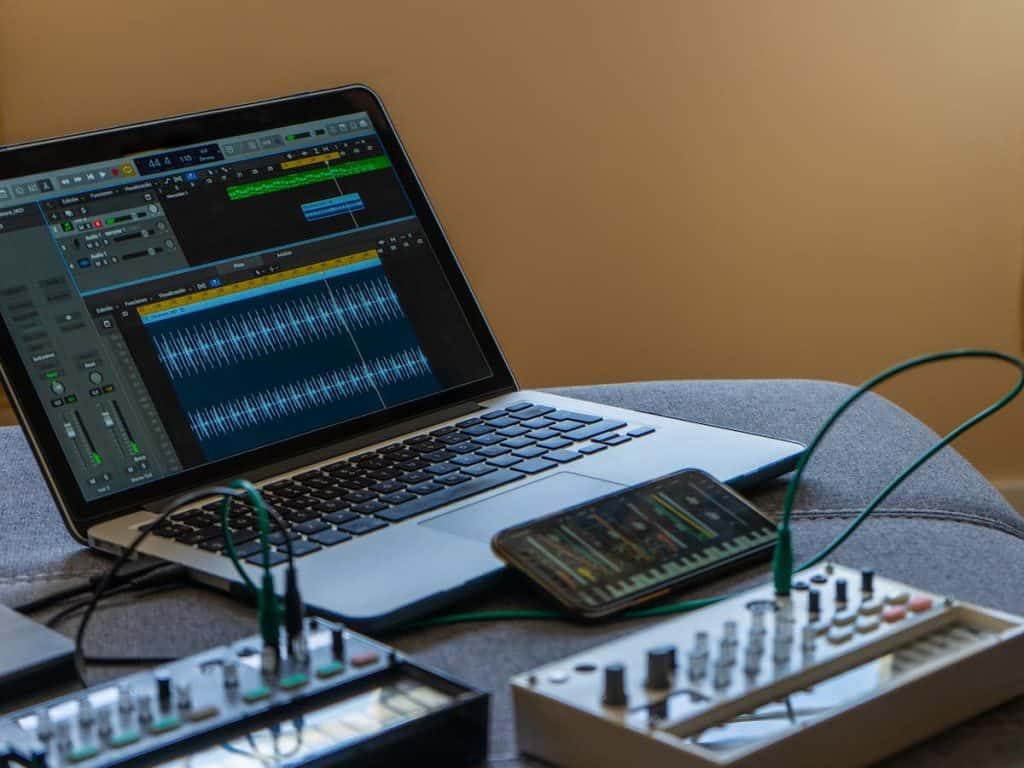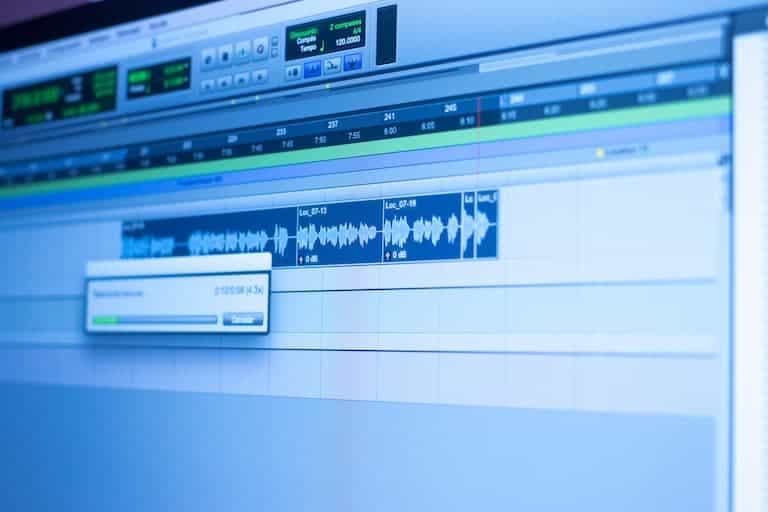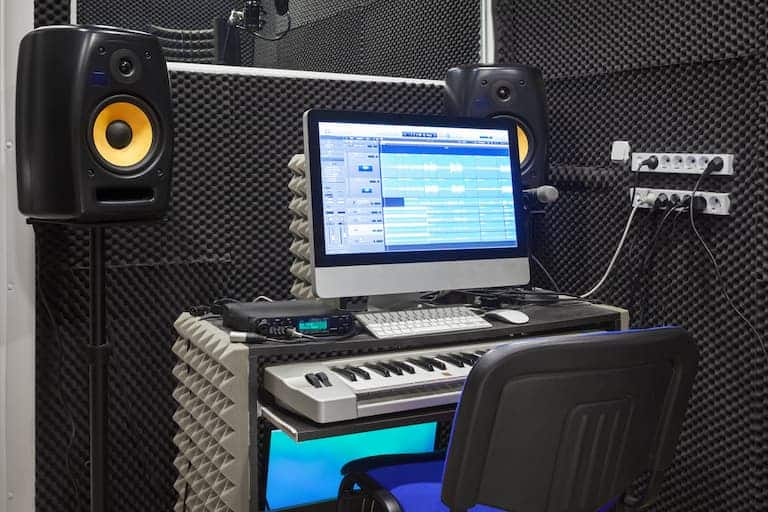With over 100 million downloads, Audacity is one of the most popular audio editing software. It comes with multiple features for editing audio, but is it good for making music?
Audacity is good for making music if you wish to record, edit and mix music from live instruments. However, if you work with VSTs, you’ll face significant limitations. Audacity’s features don’t support recording MIDI from your VSTs into your computer.
If you’re considering Audacity to be your audio editing software, read on. This article will discuss how Audacity works, its features, strong points, and limitations.

Audacity Features for Making Music
In 1999, Dominic Mazzoni and Roger Dannenberg created Audacity as a free program that could let anyone record and edit sound. Audacity is perfect for getting a clean, crisp sound if you’re preparing audio for your podcast or band jamming session. At about 90 MBs, the program is lightweight and can run smoothly on even low-end computers.
Audacity’s features let you:
- Record and playback audio
- Edit audio
- Insert effects and plugins
- Import and export multiple audio file formats, including WAV, AIFF, MP3
Let’s take a closer look at how each of these works.
Recording and Playing Back Audio
Audacity has the feature to record mono or stereo sound through a microphone. It can record at sample rates up to 192,000 Hz. For best results, always use an audio interface to prevent latency in your recording.
In Audacity, the device toolbar of the program controls all your recordings and playback devices. After you connect your mic and select its input, you can start recording by pressing the record button from the transport button toolbar. Pause and restart the recording by pressing the blue pause button.
The level meters manage the volume level before, between, and after recording.
Editing Audio
Editing in Audacity is a breeze. If a user records an audio track, it’ll appear on the screen in a waveform. The waves show the silent and louder parts of the recording, allowing you to edit your track. You can also take a detailed look into the waveform to make changes to your soundtrack.

It allows you to copy, paste, cut, and delete wherever you want in the audio file. There are unlimited undo and redo options to make the track better and an envelope tool used to fade up or down volume smoothly. Audacity allows you to edit and mix a large number of tracks.
Inserting Effects and Plugins
Audacity provides a great lineup of effects to use on your audio tracks. These effects are particularly important during pre-editing when you’re cleaning up audio. They also come in handy when doing some basic mixing of your sounds.
Some of the effects include:
- A noise remover to eliminate unwanted noise from your track.
- A pitch shifter to change the pitch of the sound without affecting the track’s tempo.
- Sound Equalizers and notch filters that increase or lower frequencies of high and low-end sound.
- Vocal remover so you can isolate vocals from stereo tracks.
- Level adjustment through a compressor, amplifier, fade-in, fade-out, and adjustable fade effects.
- Other built-in effects that help to create some good music in Audacity are echo
, phrase, reverb, reverse, and truncate silence.
Import and Export Multiple Audio Formats
It’s easy to import, edit and combine sound files with other files. You can also export them in all formats at once and import raw audio files using the “import raw” command.
Some of the file formats you can import, and export in Audacity are:
- AIFF
- WAV
- MP2
- FLAC Ogg Vorbis
- MP3 audio tracks
All formats that libsndfile supports, like GSM 6.10, 32bit, and 64bit float WAV, can be imported and exported by Audacity. It can import MP2, MP3, and other MPEG audio using libmad, and LAME encoder library is an available option for exporting MP3 files.
Why Audacity Is So Popular
Audacity often obtains positive reviews, and with good reason. Here are some of the reasons it has found such popularity:
Sound Quality
16-bit, 24-bit, and 32-bit sound quality is supported by Audacity. Users can also use high-quality dithering and resampling to convert sample rates and formats. In addition, Audacity can convert tracks with simple rates instantly.
Cost
Audacity is 100% free. It’s open-source software made by volunteers from around the world. Most music editing software, such as commercial Digital Audio Workstations (DAWs), aren’t pocket-friendly and don’t offer their best features with trial versions. With Audacity, you get audio recording, editing, mixing, and essential effects plugins free of charge.

Ease of Use
This program will surely help anybody at a beginner level. With each new release, its user interface keeps getting more straightforward, making it ideal for beginners. Moreover, the program takes just a fraction of your computer’s processing power, so you won’t worry about slowing it down. Audacity is also available for Windows, macOS, and Linux.
Limitations of Audacity
Despite its popularity, Audacity comes with some limitations.
No MIDI Input
The major limitation of Audacity is that it won’t let you record MIDI files. MIDI stands for Music Instrument Digital Interface, a file format that gets into your computer from your MIDI input devices.
When you record live music, you send raw WAV files of the recordings into your computer via an audio interface. But if you’re an electronic musician, you probably don’t work like this often.
Instead, you’ll need to play an instrument’s sound using a MIDI controller. For example, you might use an orchestra VST to play violin using your keyboard or play acoustic drum samples using your drum pad. This isn’t possible in Audacity.
Limited Mixing Features
Audacity’s mixing functions are pretty rudimentary. You can get a decent-sounding demo with its basic reverb, delay, EQ, and compression, but there won’t be any tools to do some fine mixing.
Don’t expect to find advanced features such as sidechaining or automation clips. If you want to complement your Audacity mixing process, you might want to run it on a laptop with Pro Tools.
Conclusion
Audacity provides an excellent opportunity for music enthusiasts to make good live music with lightweight software. While professional music production may not happen in Audacity, it’s a free, easy-to-use software that works well for recording and editing live instruments.
Sources
- https://www.audacityteam.org/
- https://www.homestudioexpert.com/best-laptop-for-pro-tools/
- https://www.handlebar-online.com/articles/can-you-use-vst-plugins-with-audacity/
Recent Posts
QuickTime is a vital app for many Mac users, and if you’ve recently bought a new microphone, you might wonder how to use it optimally. QuickTime cannot record audio content if it doesn’t have...
Every microphone leaves a unique signature on the quality of its output. If you’re a podcaster trying to melt your way into your audience’s hearts, a muddy, distorted recording won’t cut it....
